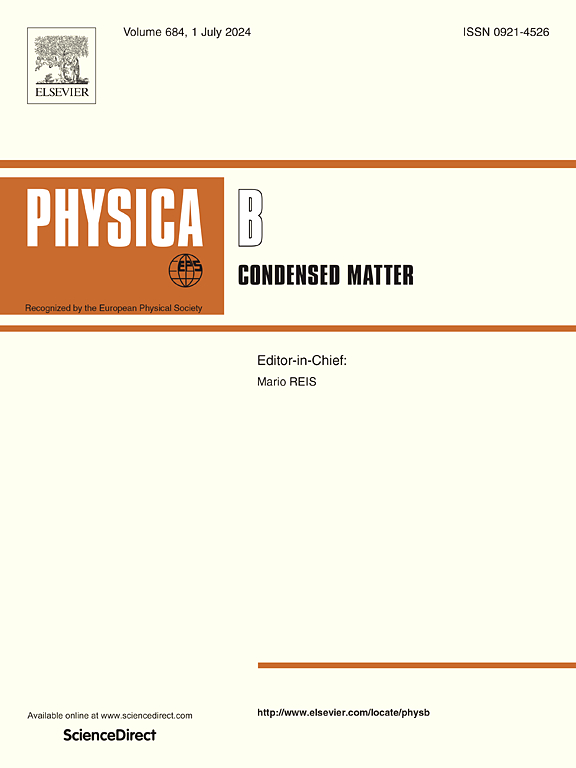具有BOD-Z-EN界面层的Au/n-Si肖特基二极管在黑暗和光照下的频率依赖界面态和二极管参数
IF 2.8
3区 物理与天体物理
Q2 PHYSICS, CONDENSED MATTER
引用次数: 0
摘要
研究了Au/BOD-Z-EN/n-Si肖特基势垒二极管在不同光照强度和黑暗条件下的电容/电导-电压(C/G-V)和电容/电导-频率(C/G-f)特性。在半导体-有机界面的表面态可以很容易地跟随施加的交流信号的低频区域,C和G的增加可以归因于表面态。在光照下,电导与频率对数(Gp/ω- log f)图中出现的峰值证实了这种界面陷阱状态。结果表明,随着光强的增加,界面阱密度(Dit)从5.81 × 1012 eV−1cm−2减小到2.87 × 1012 eV−1cm−2,弛驰时间(τ)从15.76 μs减小到3.94 μs。结果表明,势垒高度(ΦB)从0.667 eV(黑暗)下降到0.582 eV (100 mW/cm2)。供体浓度(ND)随光照强度的增加而增加,从5.46 × 1015 cm−3(黑暗)增加到8.08 × 1015 cm−3 (100 mW/cm2)。本文章由计算机程序翻译,如有差异,请以英文原文为准。
Frequency-dependent interface states and diode parameters of Au/n-Si Schottky diode with BOD-Z-EN interfacial layer in dark and under illumination
The Au/BOD-Z-EN/n-Si Schottky barrier diode was studied using capacitance/conductance-voltage (C/G-V) and capacitance/conductance-frequency (C/G-f) characteristics under different illumination intensities and in the dark. The increment in C and G at the low-frequency regions, at which the surface states at the semiconductor-organic interface can easily follow the applied ac signal, could be attributed to the surface states. Under illumination, the appearance of peaks in conductance versus logarithm of frequency (- log ) graphs confirmed such interface trap states. It was found that the interface trap density () decreases from 5.81 × 1012 eV−1cm−2 to 2.87 × 1012 eV−1cm−2 while relaxation time (τ) decreases from 15.76 μs to 3.94 μs with increasing light intensity. The results showed that the barrier height () dropped, going from 0.667 eV (in the dark) to 0.582 eV (100 mW/cm2). The donor concentration () rose as the illumination intensity increased, going from 5.46 × 1015 cm−3 (in the dark) to 8.08 × 1015 cm−3 (100 mW/cm2).
求助全文
通过发布文献求助,成功后即可免费获取论文全文。
去求助
来源期刊

Physica B-condensed Matter
物理-物理:凝聚态物理
CiteScore
4.90
自引率
7.10%
发文量
703
审稿时长
44 days
期刊介绍:
Physica B: Condensed Matter comprises all condensed matter and material physics that involve theoretical, computational and experimental work.
Papers should contain further developments and a proper discussion on the physics of experimental or theoretical results in one of the following areas:
-Magnetism
-Materials physics
-Nanostructures and nanomaterials
-Optics and optical materials
-Quantum materials
-Semiconductors
-Strongly correlated systems
-Superconductivity
-Surfaces and interfaces
 求助内容:
求助内容: 应助结果提醒方式:
应助结果提醒方式:


